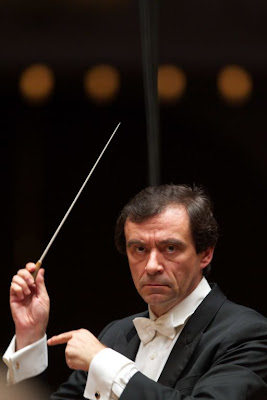Obecní dům
October 26
 |
| Mehldau, stretching perhaps a bit too much. |
Is it possible to cross over too far? You had to wonder after last night’s performance by superstars Brad Mehldau and Anne Sofie von Otter.
Playing to a packed house, the pianist and singer unveiled their new collaboration, Love Songs, a double-CD release. One disc features original compositions by Mehldau, settings of poems by Philip Larkin, e.e. cummings and Sara Teasdale. The second disc is an eclectic collection of modern songs that the duo chose, ranging from French chansons to American and British pop. This is not the first such foray for either; Mehldau did a similar project with Renee Fleming a few years ago, and von Otter has recorded with Elvis Costello.
Their Prague concert was divided into three parts. The first half was all classical, with von Otter singing songs by Grieg, Sibelius, Strauss and 20th-century Swedish composers, and Mehldau soloing on two caprices by Brahms. The second half opened with five of the Love Songs, then segued to chansons and other pop selections from the second disc.
 |
| As always, a class act. |
It took a few songs for von Otter to warm up, but beyond that it’s difficult to say much about her singing, as her voice did not carry with any clarity beyond the front third of the hall. Long ago, von Otter established herself as a world-class mezzo-soprano, and is now considered one of the finest singers of her generation. But her voice is simply not big enough to fill a venue like 1,200-seat Smetana Hall. Even the spoken introductions that she gave for many of the songs were hard to hear. The fact that the piano was miked, and she was not, added to the sound problems; for most of the evening the balance wasn’t right, and occasionally her voice got subsumed by the piano.
That said, the Strauss songs seemed a surprisingly good fit, with von Otter showing impressive range and great tenderness of expression. And the Sibelius songs were wonderful, as von Otter took full advantage of the dramatic, even operatic, flourishes. Who knew that Sibelius could spin out such lovely melodies?
As for Mehldau, it is no exaggeration to characterize him as one of the most interesting jazz artists in the world at the moment. But he is not a classical pianist. He plays classical music like he plays jazz – with his own distinctive rhythms and phrasing. It’s capable and respectful, and he makes a great accompanist for von Otter. Stripped naked, though, as it was on the Brahms, his playing sounds like what it is – a brilliant jazz performer moonlighting in another genre.
The same could be said about von Otter in the popular segment of the second half. She was obviously enjoying herself with more relaxed fare, but she is too dignified to pull off a breezy French chanson, nor does she have the chops to do proper cabaret or club-style singing. And at least for this reviewer, classical phrasing on songs by Joni Mitchell and the Beatles just doesn’t work.
So on one end of the concert, there was a jazz pianist playing classical music, and on the other, a classical singer performing pop – neither quite right, or satisfying. Ultimately, those segments of the performance seemed like filler to make an evening out of the relatively brief centerpiece, which was brilliant.
The duo performed the five Teasdale songs, meditations on love that range musically from straightforward romantic melodies to jazz treatments with off-key harmonies and bent notes. It was very sophisticated work, featuring contrasting piano and vocal lines, and Mehldau providing everything from graceful backing with soft chords to running rhythm lines that drove the song. The music occupied its own unique space, somewhere between classical and jazz, taking elements from both worlds to utilize the respective strengths of the performers. An entire program of material like that would have been stunning.
As for the technical problems, they were unfortunate, but the organizers didn’t have many choices. With 1,200 people eager to see the show (and probably more, since it was sold out), they couldn’t put it in the Rudolfinum, where it would have sounded best. The only real alternative is the Congress Center, which still feels like what it was – a communist-era convocation hall. The piano needed some volume, but you can’t (or at least shouldn’t) mike a classical singer. However, miking von Otter for the second half of the show would have been perfectly acceptable. And both von Otter and Mehldau should have had a microphone when they were talking to the audience.
But these are all a reviewer’s complaints. The fact is, 1,199 people left Obecní dům perfectly happy last night, and even had a chance to get in line for autographs from the performers afterward. The surprising number of empty seats in the second half suggests that many of the audience members were tourists, content to shell out big money for half a concert. No complaints about that, though – it’s what enables the locals to see performers like von Otter and Mehldau, who are willing to take risks.
Further reading: Mehldau has an interesting essay on his website about writing the music for Love Songs, which you can read here: http://www.bradmehldau.com/music/love_songs/index.html









